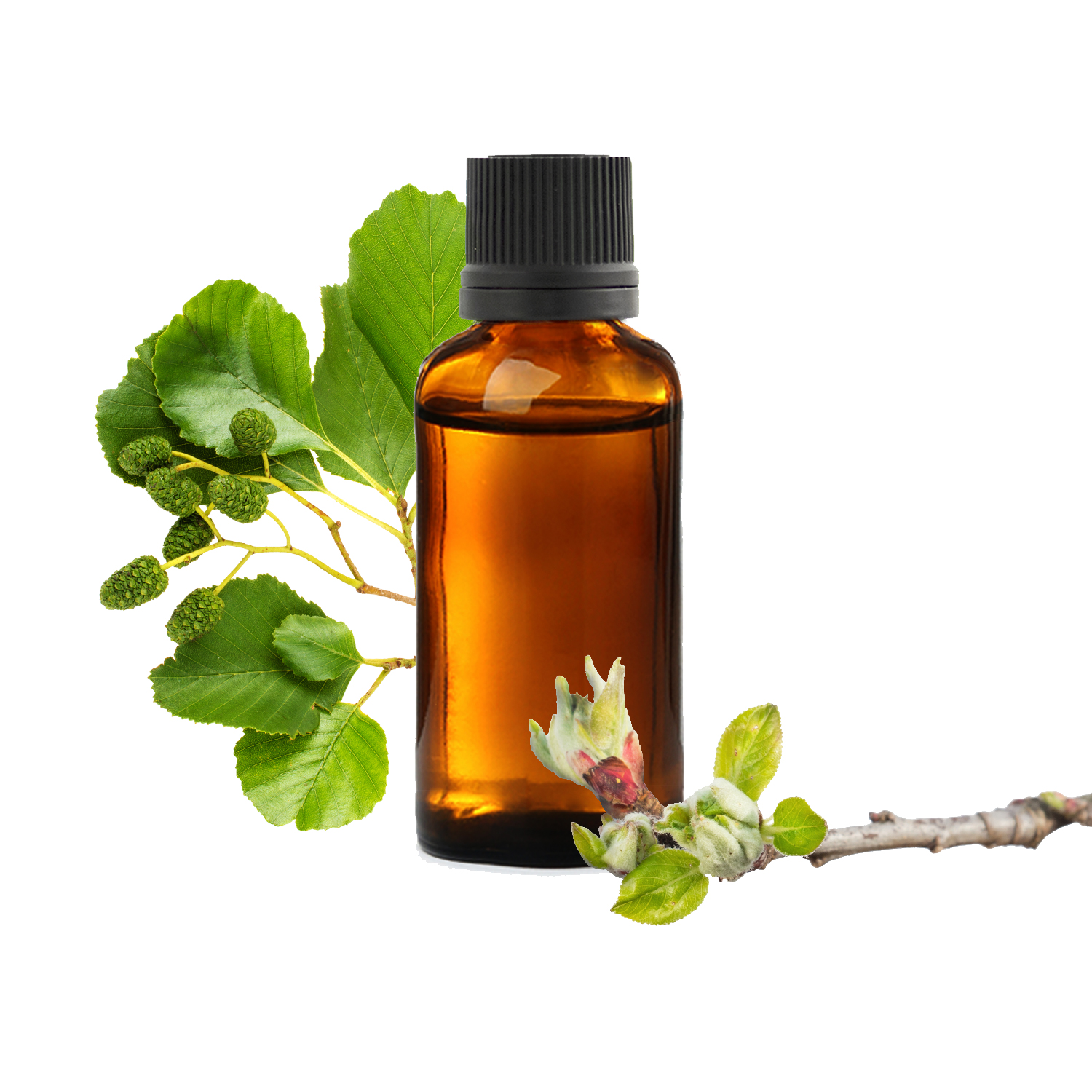
Glutinous Alder bud macerate is a major gemmotherapy remedy, and it is one of the only ones that is considered to have a "double speed" action: used as an adjunct treatment, it is a curative macerate which has a natural antibiotic function to treat infections and inflammations, while in the long term, it has a preventive action to preserve memory. It also makes it possible to treat the various disorders linked to a lack of blood circulation, because it is a venous fluidifier: with it, no more thromboses, heavy legs, phlebitis and even migraines! Glutinous Alder bud macerate will be very suitable for situations of memory disorders, circulation disorders and ENT infections. Latin name: Alnus glutinosa (L.) Gaertn. Part used: Fresh buds.
This article was updated on 19/07/2023For what problems should it be used?
-
Immune and respiratory system ++++ : allergy, asthma, bronchitis, flu, ENT infection, rhinitis, nasopharyngitis, sinusitis, tracheitis
-
Blood and lymphatic system ++++ : Arteritis, Coronaritis, Edema, Phlebitis, Thrombosis (prevention), Varicose ulcer, Varicose veins
-
Digestive system +++ : Cholecystitis, Gastritis, Crohn's disease, Colitis
-
Nervous system +++ : Migraine, Concentration problems, Memory problems
-
Urogenital system +++ : Cystitis, Urinary infection
-
Cardiac system ++ : Heart attack (continued), Hypertension
-
Cutaneous system ++ : Dermatitis, Urticaria
-
Osteoarticular system ++ : osteoporosis, rheumatism, tendinitis
How to use it alone?
Adults and adolescents : 5 to 15 drops per day in a glass of water, divided into 1 to 3 doses during the day depending on the case, 15 minutes before a meal for 3 weeks. Start with 5 drops and increase gradually:
- or one drop per day up to 15,
- i.e. 5 drops the first week, 10 the second and 15 the last.
Children over 3 years old : 1 drop per day for 10 kilos. Start with 1 drop and gradually increase.
Synergistic uses
Migraine
Glutinous Alder can be associated with Ginkgo biloba and at Apple tree, which promote cerebral circulation and have an antispasmodic action. The Apple Tree is particularly interesting if the migraine is linked to menstrual cycle disorders.
Allergic asthma
Glutinous Alder bud macerate can be used in combination with Alder bud macerate. Viburnum, very specific for asthma problems since it is both antispasmodic and fights against allergic manifestation.
Urticaria
Glutinous Alder can be used in combination with the famous macerate of buds of Cassis, to accentuate the anti-inflammatory effect, but also to drain the skin.
Main properties
-
blood thinner, circulatory :
glutinous Alder bud macerate helps thin blood that is too thick and reduces its viscosity. It is an antithrombotic. It thus promotes better irrigation of the organs and better oxygenation. Used long-term, it improves cognitive functions, memory, and promotes concentration. In curative action, it acts on certain migraines, both acute and chronic.
-
anti-inflammatory, draining :
glutinous Alder is a general anti-inflammatory. It acts mainly at the respiratory level, but also at the digestive, joint, vascular and urinary levels. In addition, it has an antispasmodic and draining action. This makes it interesting in joint problems with the presence of toxins, urinary infections, and respiratory infections with the presence of mucus. It also acts on any kind of organ or tissue suffering from chronic inflammation.
-
anti-infectious :
third action but not the least, and above all perfectly complementary to the others, Glutinous Alder acts as an anti-infectious. It is sometimes described as a natural antibiotic, or even eubiotic: it stimulates the body's immune defenses. It is therefore recommended during inflammatory infections with mucus production. It therefore acts effectively on the entire ENT sphere.
Precautions for use
- Glutinous Alder bud macerate is a herbal food supplement. It does not replace a varied diet and a healthy lifestyle. It is important to keep it out of the reach of children and not to exceed the recommended daily dose. Dosages must be adapted for young children.
- Macerate of glutinous alder buds is authorized for the whole family, except for babies under 3 years old and pregnant women.
- Seek medical advice if breastfeeding or takinganti-coagulant.
- Store away from light and heat.
What does a good Glutinous Alder bud macerate look like?
Botanical characteristics
- Latin name: Alnus glutinosa (L.) Gaertn.
- Botanical family: Betulaceae
- Distilled part: fresh buds
Composition
- Composition: Alcohol* 32%, Water, Vegetable Glycerin*, Glutinous Alder bud extract (Alnus glutinosa (L.) Gaertn.)*.
Organoleptic characteristics
- Appearance: liquid - possible cloudiness
- Color: reddish brown
- Odor: characteristic, slightly alcoholic.
- Taste: characteristic, alcoholic, harsh.
Was this article helpful to you?
Average grade: 4.8 ( 462 votes)
Bibliography
Work : Piterà di Clima, F., & Nicoletti, M. (2018). Summary of gemmotherapy - Scientific foundations of Meristemotherapy. Amyris Editions.
Work : Boistard, S. (2016). Gemmotherapy - Buds for health - Practical and family guide. Terran Publishing.
Work : Andrianne, P. (2011). Treatise on gemmotherapy: Therapy using buds. Amyris Editions.
Work : Halfon, R. (2011). Gemmotherapy - Health through buds. Dangles Editions.
Work : Ledoux, F., & Guéniot, G. (2014). Phytembryotherapy: The embryo of gemmotherapy. Amyris Editions.
Work : Pineau, L. (2019). The great book of gemmotherapy. Leduc.s Éditions.


